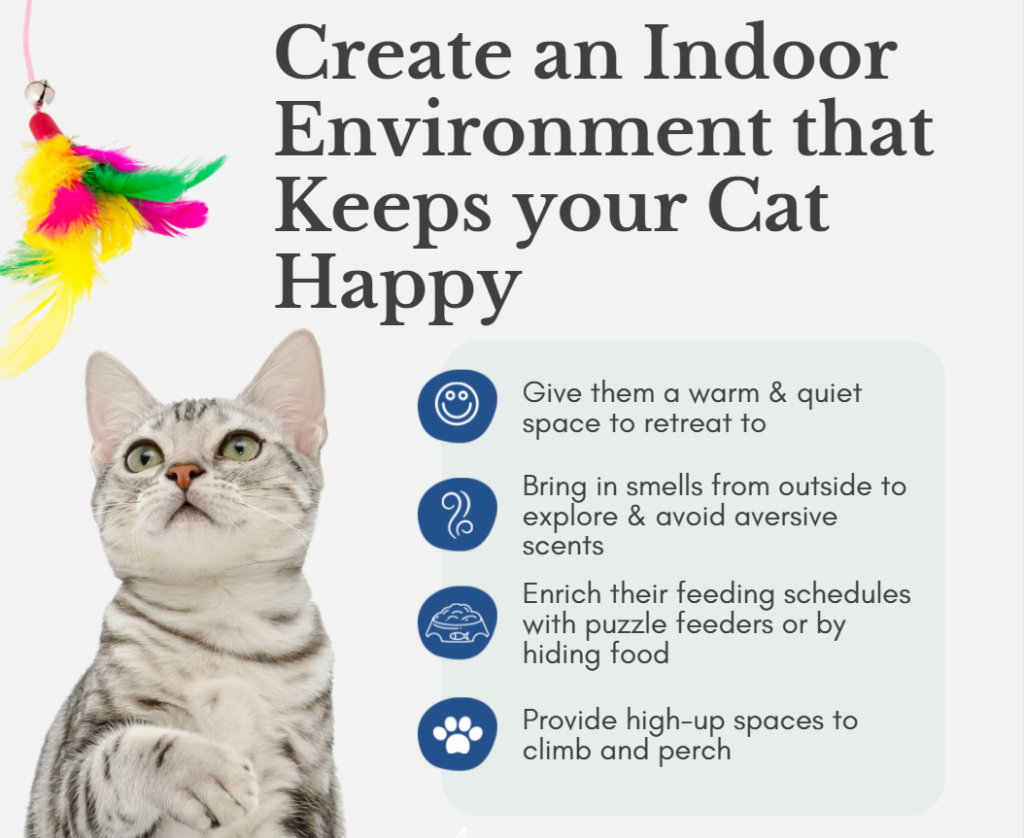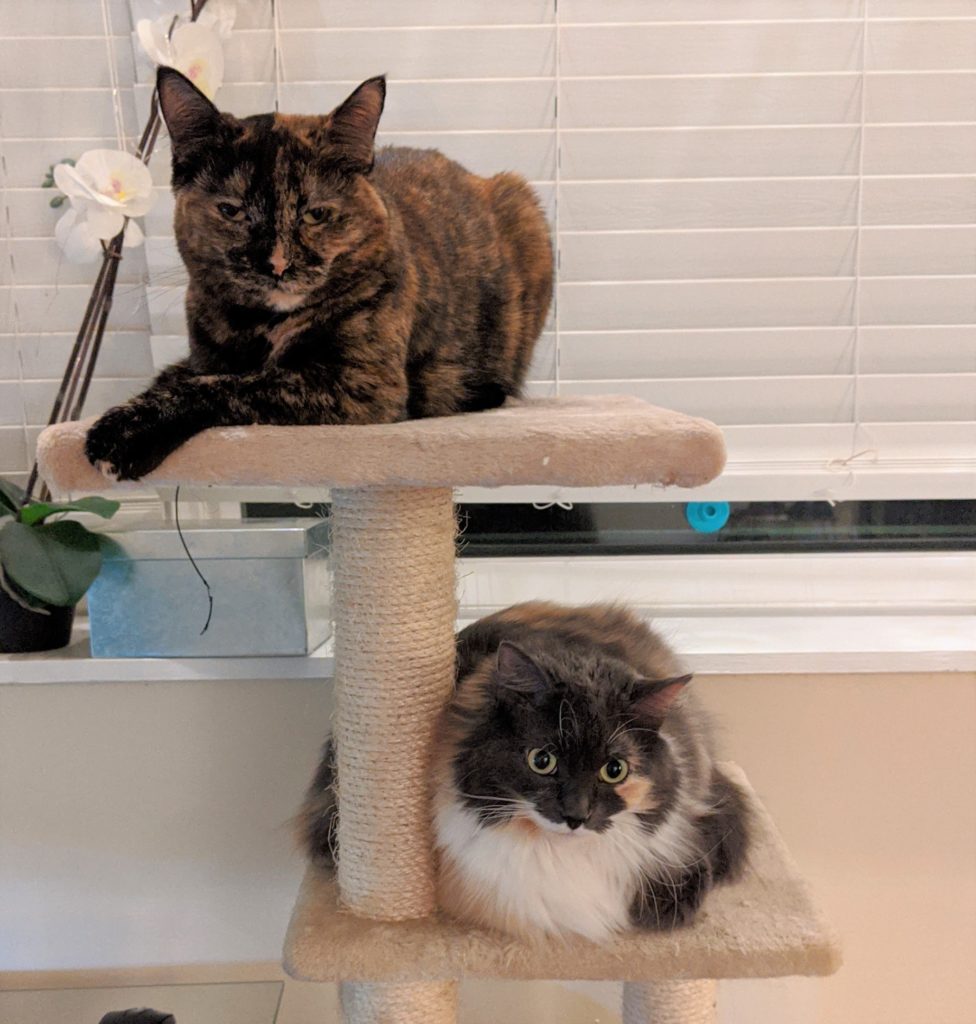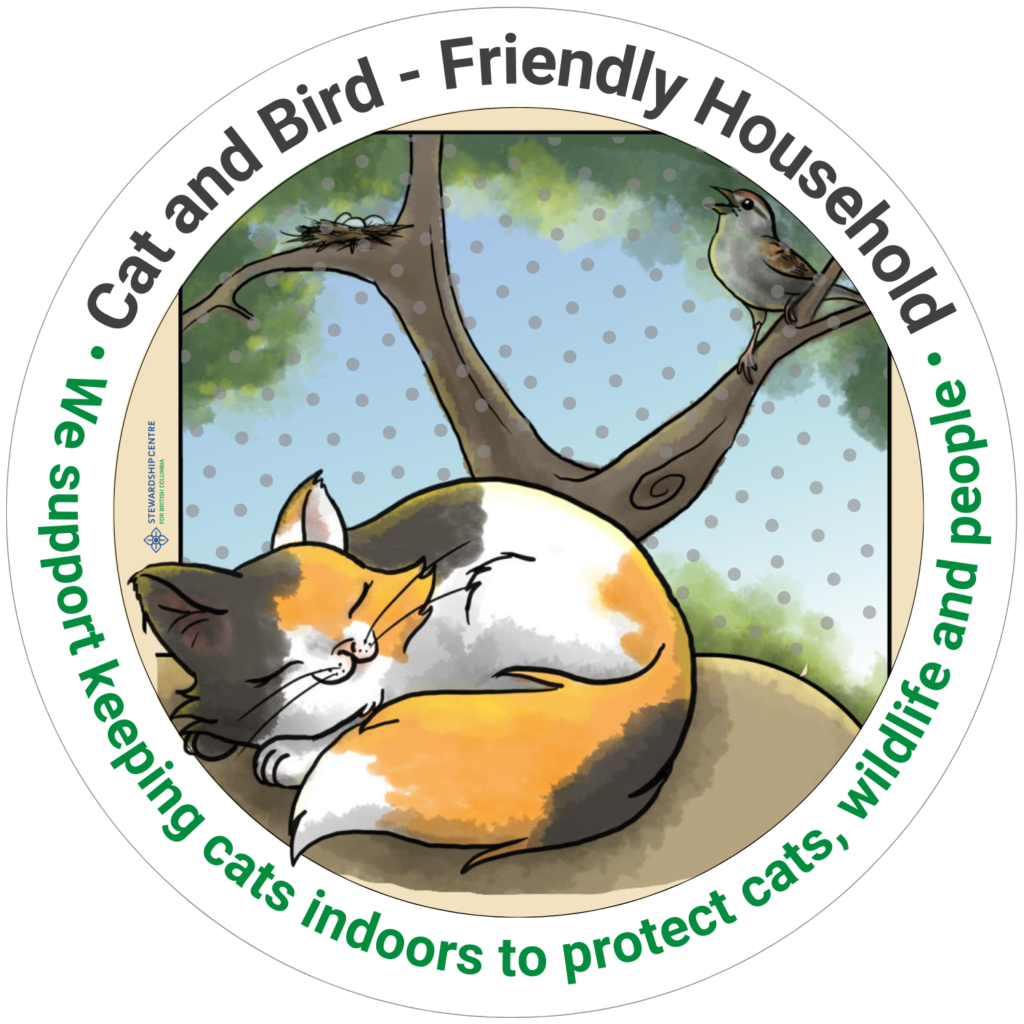Cats and Birds | Indoor Enrichment

The Joy of Being at Home
Creating an Environment that Keeps your Cat Safe, Happy, and Engaged
by Bryna Turk, Cats and Birds Community Engagement and Outreach Coordinator
Cats are one of the most popular pets in North America, and it’s easy to see why. They can be very playful and affectionate, not to mention downright cute! Cats are also very independent creatures and are instinctual hunters – but does this mean cats would be happier outdoors? Not necessarily!
There are many ways to keep your cat happy and engaged without letting them roam outside, including making their indoor environment as comfortable and inviting as possible. These tips will give you some unique insight on what kinds of environments your cat enjoys and how you can make your home just as (or even more) enjoyable than outside by doing your best to let your cat perform its natural behaviours when indoors.

High-up Spaces
Cats prefer to watch their surroundings from high-up and can benefit from having access to vantage points like cat trees and hammocks, shelves, or the top of a fridge or sturdy bookshelf. If you have a support beam in your home, consider wrapping it with rope for a DIY floor-to-ceiling scratching post that they can also use to scale to the ceiling (sisal rope works well for this and is what most cat scratchers are made of).

Form our Happy Cat gallery: Sisu and Minette have a viewing post by the window to watch birds fly by.
“Indoor cats can be very friendly and affectionate companions if you spend time with them and find what toys and treats they like.” – Matthias, Summerland, BC.
Temperature
Did you know that cats maintain their internal body temperatures best between 30 – 38°C? This range is what’s known as your cat’s thermoneutral zone, which essentially means their body doesn’t have to do much work to keep at a comfortable temperature, and that hot and cold can be easily balanced. While this temperature range is too hot for your home, you can keep your cat nice and comfy by providing them with warm bedding, beds or boxes to rest and hide in, or a microwaveable heat pad- just make sure it’s not burning hot to the touch!
Noise Levels
The sounds in your cat’s environment can also affect them. It’s been suggested that noise at a level similar to that of a quiet conversation may be ideal for cats and that loud noises like yelling or music playing at a high volume can be aversive. If your home is prone to loud noises, ensure your cat has a quiet space or room they can consistently retreat to escape the sound.
Appealing and Aversive Scents
To provide enrichment using scents, you can try spraying the scent of catnip on toys or scratching posts. Introducing exciting scents from outside is another way to enrich your curious indoor cat. You can do this by filling a box full of leaves from your backyard and letting your cat explore it. On the other hand, some scents may be unappealing or aversive for your kitty. Potentially stressful scents for your cat could include unfamiliar dogs and other cats. Cats have also been known to dislike strong odours like alcohol, cleaning products, and citrus.
Meal Enrichement
Feeding your cat at the same location and time each day can get boring for them. Instead, you can provide enrichment by hiding kibble around the house for them to find throughout the day or in-between meals. Puzzle feeders are another great option that will provide your cat with some exercise, as they will have to work to access their meal. You can make a DIY puzzle feeder by closing off the ends of a toilet paper roll and cutting out some small kibble-sized openings.
By providing your cat with opportunities to access appropriate temperatures, noise levels, scents, and enrichment opportunities indoors, you will create an appealing environment they will enjoy. Not to mention you’ll be keeping them safe at home! You may find that when it comes down to it, your cat may enjoy staying inside more than they like being outside.
Stewardship Centre for BC recommends keeping cats happy and safe at home to protect them from outdoor dangers and reduce the impacts of roaming cats on birds, bats, other wildlife and people in your community.
To learn more about the Cats and Birds project and how you can make your community a safe place for wildlife, visit our Cats and Birds website.





